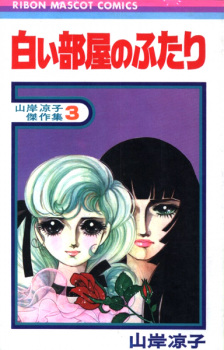Mar 25, 2024
Saint Rosalind is a Horror Shoujo. It takes place in a European setting with Christian symbolism which are thematically tied to the messages and philosophies in the narrative. All these factors are mixed to depict the Devil’s temptation - charming on the surface, harmful in the interior – represented in the duality between Shoujo's cuteness and Horror’s gruesomeness.
As for its reading experience, it’s the type of story that can easily trick the reader. Most of the time I caught myself thinking “is this for real? Or am I also falling into the trap?”, because despite being only 17 chapters long, it brings you to
...
theorize about the protagonist all the time and other external things as well, like the character-narrator and the conclusion the story must take.
Rosalind killings can be divided in three groups which I’d like to refer as “selfish”, “selfless”, and “punitive”, which no matter the intention, all of them which result in the same product: death. By accompanying her throughout her journey, we are brought to reflect not only on Rosalind but also on all sorts of people – the best and the worse - who interact with her. At the end, we finally come to understand the character of “Rosalind the Devil’s Child”.
In the selfish killings, Rosalind is driven by motivations such as greed, lust and envy. Rosalind firstly establishes a deal – mostly as a form of memento – which is an interesting part of her personality as the “Devil”, she usually takes something from someone when the people agree with her (there is one exception to that, though). After the promise is made, Rosalind then strikes which the sole intention of filling her chest with treasures (from objects to living beings).
It is worth noting that all her selfish killings were done to people who were doing nothing wrong, but innocently fell into her charm and accepted her terms. That side of the story shows us how a little slip-up (indecisiveness, negligence, persuasion) might bring ruin to a person.
The selfless killing is kind of the opposite, Rosalind does it as a form of “retribution” rather than gaining something (that’s shown in the lack of a material deal). Her intention is born from empathy and the goal is usually helping someone (curing or avenging people).
Despite being the “good intended” murder, the selfless killing has an even worse effect since it involves other people and not only the one Rosalind wants to “help”. Those people are usually in a relationship issue with their families, and because of that they end up letting the “Devil” join their households to bring destruction.
And the last kind, the “punitive”, is the one that happens when people supposedly lie to Rosalind and are killed for that. I see that aspect of Rosalind as the Devil’s desire to take the position of God, thus applying His judgment on his own.
Of course, the Devil is not a fair judge so not all the supposed lies were in fact lies. The Devil perception of a lie is not just the opposite of truth, but a “lie” can also be a reality he refuses to accept, and that’s why this is a conflicting trait who leads to perdition.
All these sides dwells between Rosalind’s devil and human natures and they are presented not by her thoughts, but by her actions, interactions and expressions. While she is described as a “Devil” and derivatives of that in the story, she’s attached to some characters such as her mother, her butler and her father; to the point of crying for them, getting happy around them and so on while still being somewhat sociopath towards other humans in general.
I was really troubled about her being a Devil depiction while reading it. I mean, the Devil is the father of lies while Rosalind hates lies; the Devil always acts for his own while Rosalind also acts for others, despite having her selfish drives as well; and the most important point, the Devil is not redeemable.
By the end of the story, I came to conclusion that she is not the Devil itself but is certainly a “Devil’s child” - a byproduct of the Devil, but not totally compatible with him – as the author herself described her as a “young girl who can’t tell right from wrong”. Rosalind has emphasized throughout the story that most of her cruel killing methods were learned from other places, in other words, she absorbs “evilness” from the world and reproduces it without distinction of good or evil.
It may end in a sad way, but I like that she achieved redemption by the end (since she is not the Devil, but someone under his influence). Some may say it was a “Deus Ex-Machine" but this is the type of person that no matter how much you try, only a “divine intervention” can change their petrified heart, and that’s what happened. In the end, she is just an innocent young girl who absorbed all kinds of humanity bad traits until she became a “Devil’s child”.
Reviewer’s Rating: 8
What did you think of this review?
Nice
 0
0
Love it
 0
0
Funny
 0
0
Confusing
 0
0
Well-written
 0
0
Creative
 0
0Show all



























